There was a time before when the Ganges was “swollen with dead bodies”.
In 1918, when the great flu pandemic swept through India and killed an estimated 18 million people, the water of this river – upon which so many lives depended – was filled with the stench of death.
And so it is again. India’s official death toll from the coronavirus pandemic may be just over a quarter of a million, but experts believe the real figure to be up to five times higher, and the bodies that have begun washing up in India’s holiest river have become haunting representations of the uncounted Covid dead.
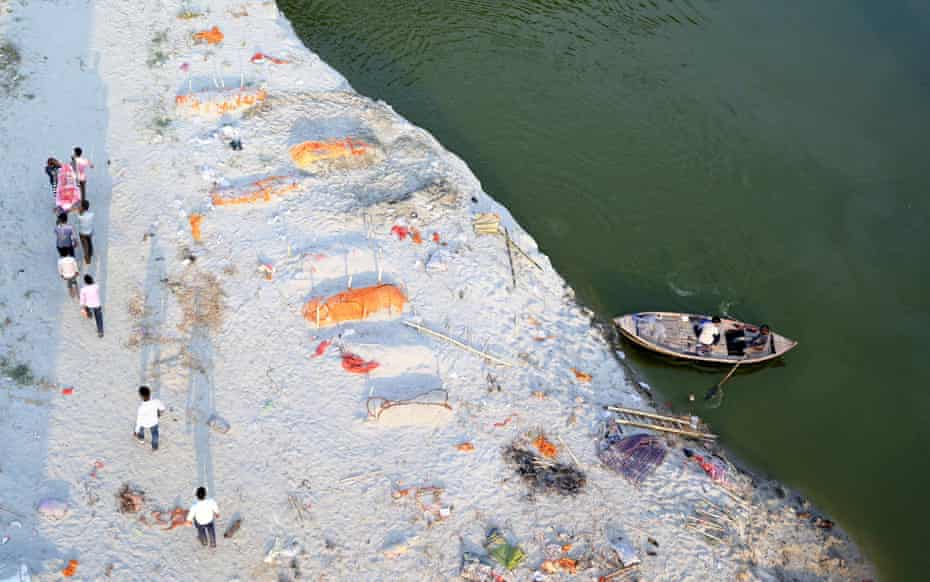
On Wednesday, India reported another record number of deaths, 4,400, as the virus continued to spread out of the big cities and into rural areas.
There is, however, no official record of the number of bodies that have been found over the past two weeks in the stretch of the Ganges that flows through the poor rural states of Uttar Pradesh and Bihar, or buried in shallow sandy graves along the riverbank in Uttar Pradesh. Locals and journalists who have counted put the figure at more than 2,000.
In the Uttar Pradesh village of Gahmar, Raju Chaudhry, 15, who works on the fishing boats, said recently he had seen “around 50 bodies a day washing up, over many days”.
There is no way to know if all were infected with coronavirus, though the government has accepted some are Covid victims. It is widely believed that as the vicious Covid second wave has ripped through the poor rural communities of Uttar Pradesh, leaving death in its wake, stigma around the virus and the high cost of firewood for cremation meant many families had instead resorted to a custom – a tradition in some of the villages – of immersing the shrouded bodies into the holy waters of the Ganges. Others have buried them on the sandy banks.
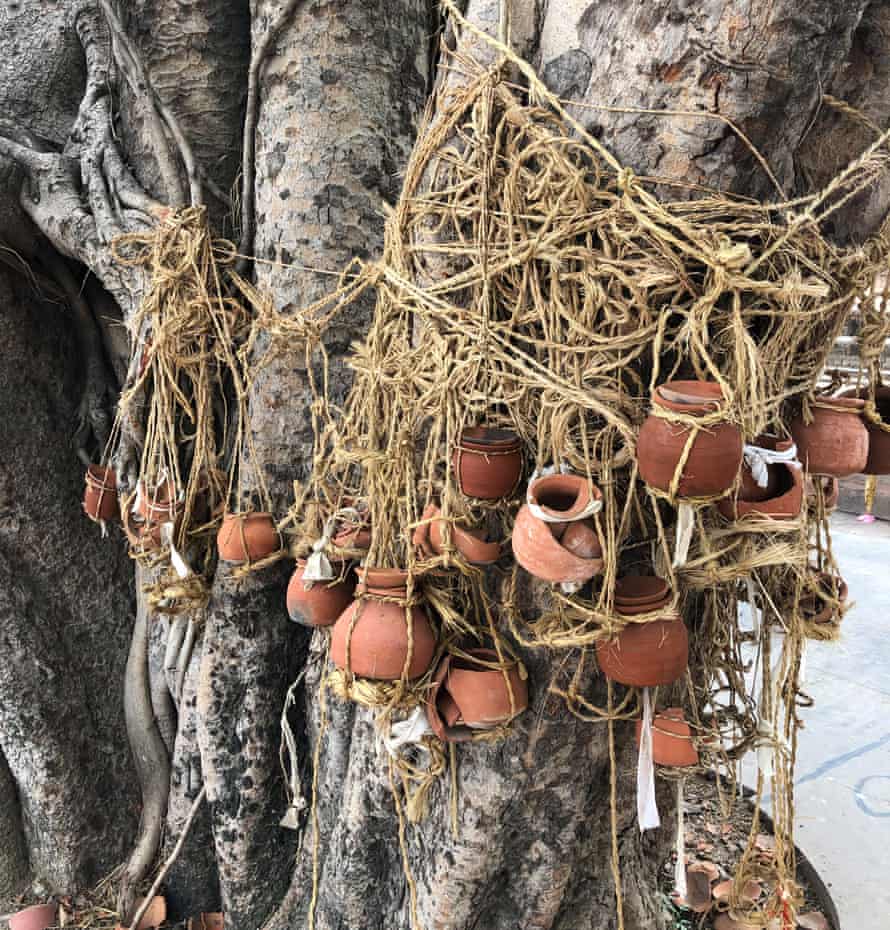
Officially, death and infection rates of coronavirus in Gahmar are low. But Bhupendra Upadhyay, a local priest sitting beneath a banyan tree on the ghat – a flight of steps leading down to the river – said a lot of people had died in the past few weeks.
“I have seen 30 to 35 bodies brought to the river recently and immersed here,” he said. “More are doing immersion because people have found it hard to arrange cremation when so many people are dying.”
Upadhyay pointed to the trunk of the banyan tree, where dozens of clay pots were tied. “Each of those pots represents someone who has died,” he said. “Look how many there are, just from the last 10 days.”
Police have been stationed along the river to stop immersions and said they had cleared most of the bodies from the river, even putting nets across the Ganges on the border of Uttar Pradesh and Bihar, but around Narva ghat in Gahmar many were still visible. As a body slowly emerged into view, carried by the slow current of the Ganges, cries rang out. Scattered across a bank of the river were three more, each metres apart, still shrouded in cloth and entangled in the detritus of the river.
A brief boat trip upstream revealed dozens more in the water and along the bank, in varying states of decay and picked at by birds and wild dogs.
Those who immersed the bodies say they had little choice. Sitting in the courtyard of a ramshackle family home, where 20 people live under one roof, Narsingh Kumar spoke of his two older brothers who died days apart. Though neither were tested for coronavirus, they died less than two days after showing symptoms.
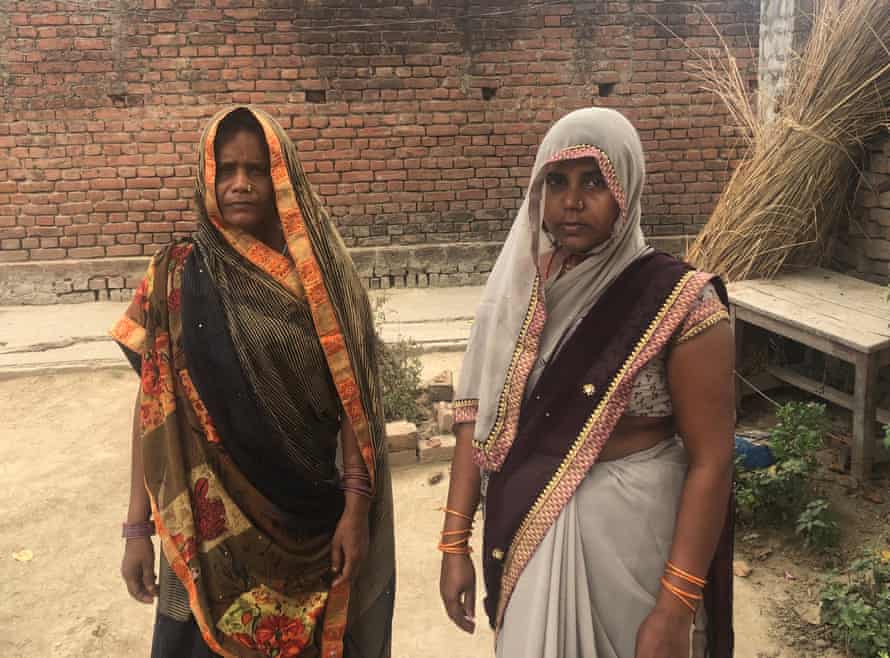
The first brother, Shambhu Nath, developed a high fever on 19 April and three days later he was struggling to breathe. An ambulance was arranged but he died on the way to hospital on 23 April. That same day, his brother Swami Nath also began to have breathing difficulties. He was taken to a private hospital and put on oxygen for a night then discharged, but died on 24 April.
In the case of Shambhu Nath, the family had no difficulties with cremation, with villagers offering help and attending the funeral. But after the second brother died they found themselves as outcasts among their neighbours.
“When we tried to buy firewood for the cremation we were shooed away and no one in the village would help us with cremation because they suspected Covid,” said Kumar. “We couldn’t get any wood and didn’t know what else to do so we had no choice but to immerse his body into the river. We did it the next morning at 11am with just close family.”
The toll of the pandemic on the rural villages of India, home to 65% of the population and where basic healthcare infrastructure is lacking or absent, will probably never be known. In Uttar Pradesh, where the population of 235 million exceeds that of Brazil, rural villages across the state have reported people dying in their droves within days of getting a cough, a fever or breathlessness, without ever getting a Covid test. The government has begun door-to-door testing in villages but has not reached many remote areas.
In Sauram village, in the Ghazipur district of eastern Uttar Pradesh, locals described the situation as “very scary”.
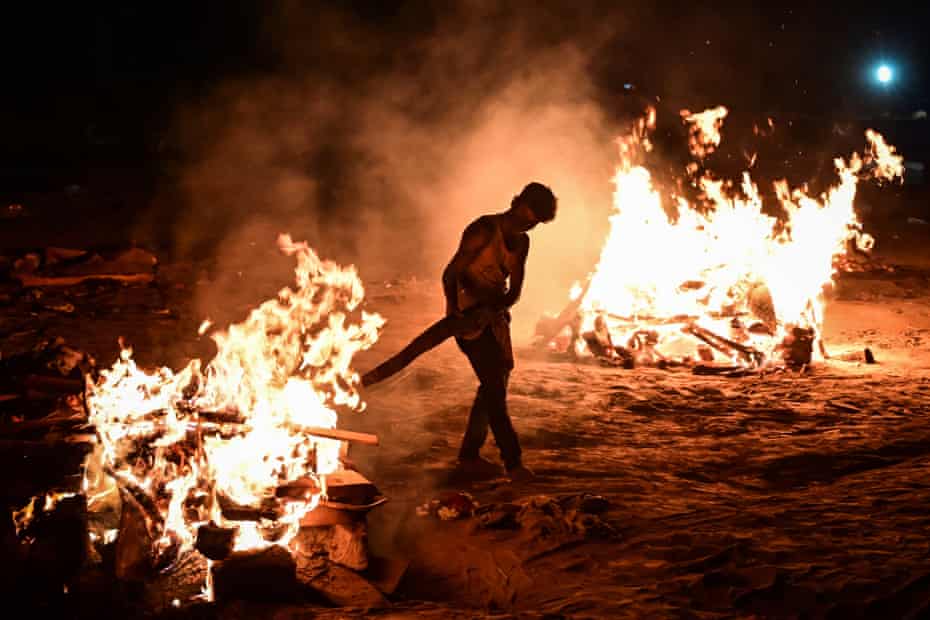
“In the last 25 days we have heard of 17 deaths in the village,” said Manoj Kumar Jaiswal, 42, the husband of the head of the village. “Ninety per cent of people in this village are sick, every household has someone who has a cough or a fever. Many people in the village are getting a temperature, cough and they die within a day or two.”
Jaiswal said no one in the village was being tested for coronavirus, even when they went to local hospitals. “I am scared because we don’t know why this is happening,” he said.
Mohammad Iqbal, 42, who runs a grocery shop in Sauram, described how his mother, Tara Begum, 55, had fallen sick on 4 May with a cough and a fever. As she struggled to breathe, he took her to the nearby private Shivangi hospital where she was put on oxygen. She died the next morning.
“The doctors didn’t tell me the cause of death but they said that four or five people had died in the hospital that morning,” said Iqbal. “There was no corona test done for her at the hospital and no tests are being done in the village, so how can we know if corona is here. All I know is that I have never seen so many people dying.”
The dire state of the healthcare accessible by the residents of Sauram and neighbouring villages was evident in a visit to Shivangi hospital, where many in the village displaying Covid symptoms had been treated at a steep cost. It was now emptied of patients and the doctor running it had “gone away”.
Raju Kushwaha, a second-year student in traditional ayurvedic medicine who had been treating the patients at the Shivangi, said he had never knowingly treated a Covid patient because no one had been tested.
“We admitted many patients who were breathless and kept them on oxygen support,” said Kushwaha. He acknowledged many older people would have died after the hospital had discharged them with low oxygen levels. “The hospital has not kept any records of patients who have come in recent weeks,” he said.
Meanwhile, the local public health centre in Ghazipur, the first medical point of contact for most rural villagers, was ghostly and deserted on the evening the Guardian visited and the “on-call doctor” was actually just a local pharmacist.
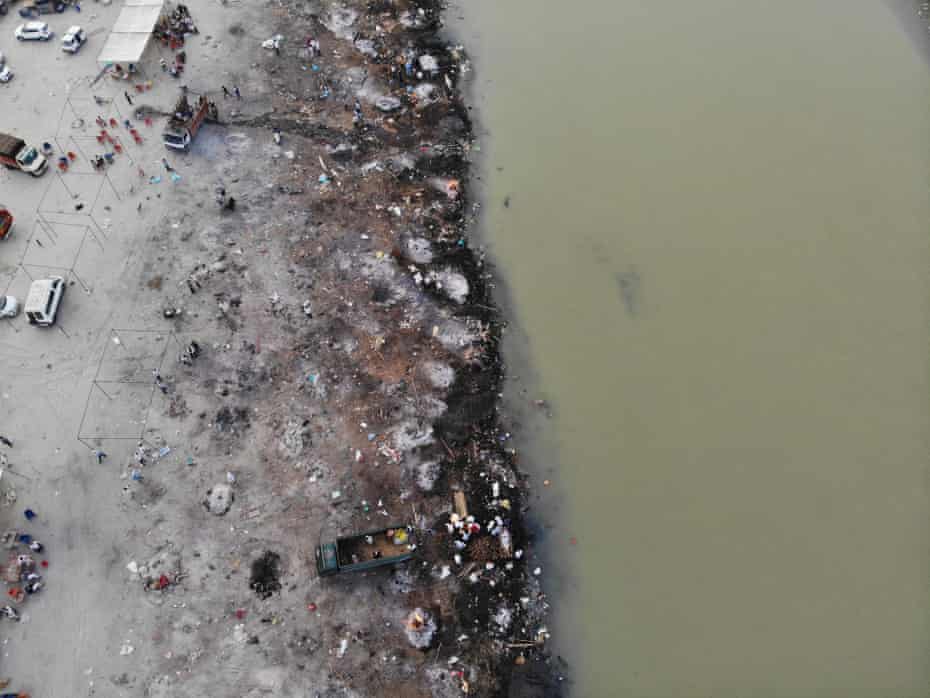
The Uttar Pradesh government has said it is carrying out door-to-door testing in 97,000 villages and has launched an “aggressive trace, test, track and treat policy” that has reduced cases by more than 100,000 in recent days, as well as adding 100,000 hospital beds. Families of the dead are also being given 5,000 rupees (£48) for cremation costs.
“Even after being infected with coronavirus himself, the chief minister has been travelling to the countryside to see and monitor the situation,” said a government spokesperson. “Our model is better than any other model in the country.”
Yet for those families grieving the dead in Sauram, it has been an added indignity that their loved ones will never be counted as official victims of the pandemic. For Radhe Shayam, 64, a farmer whose wife, Jagrani Devi, 60, died on 7 May after suffering breathlessness and severe lung damage, government action had come too late.
“We did our best, we did everything the doctors told us to, but we could not save her,” he said. “If she had been tested for coronavirus and given proper treatment in hospitals rather than sent home twice, maybe she would be alive.”
This content first appear on the guardian
